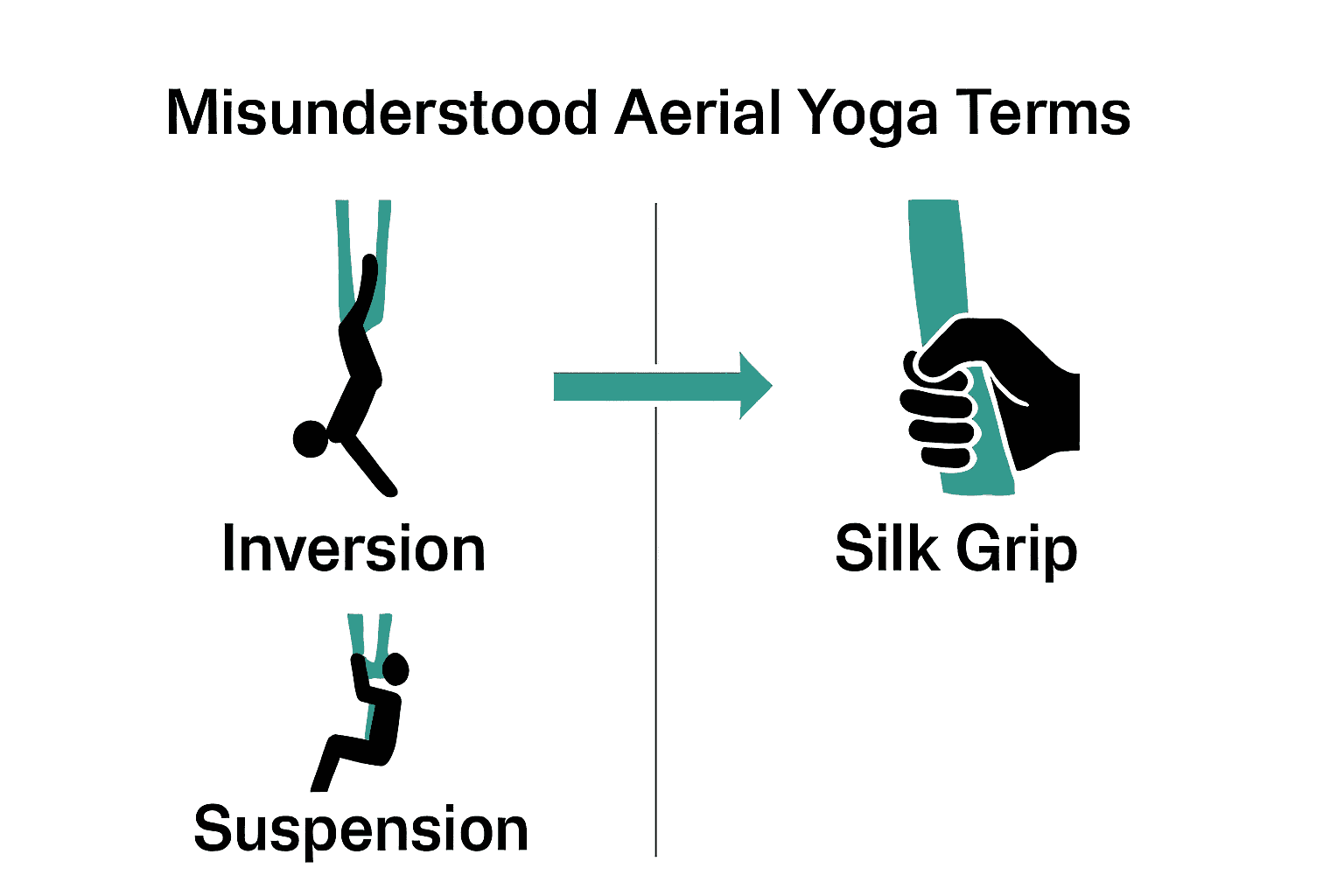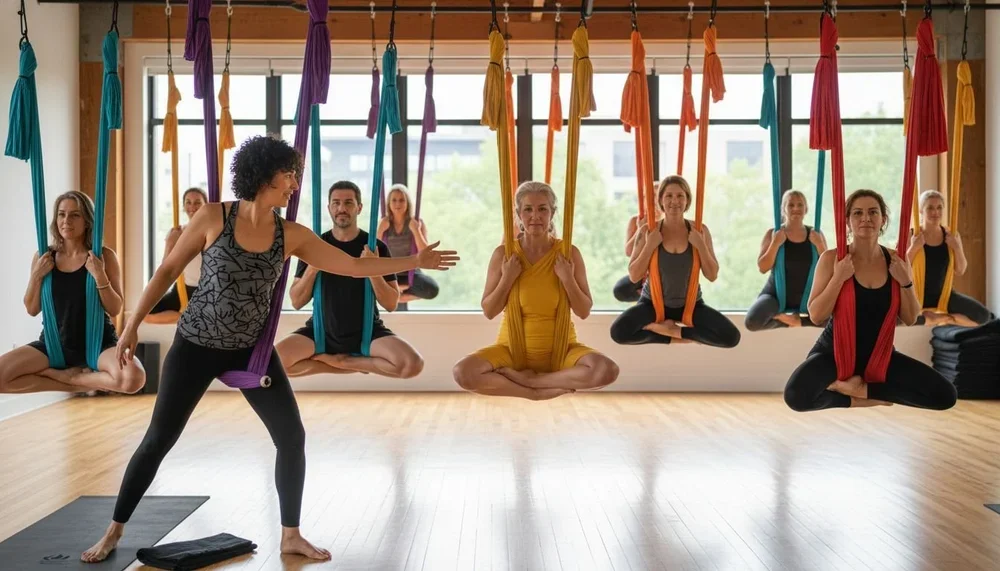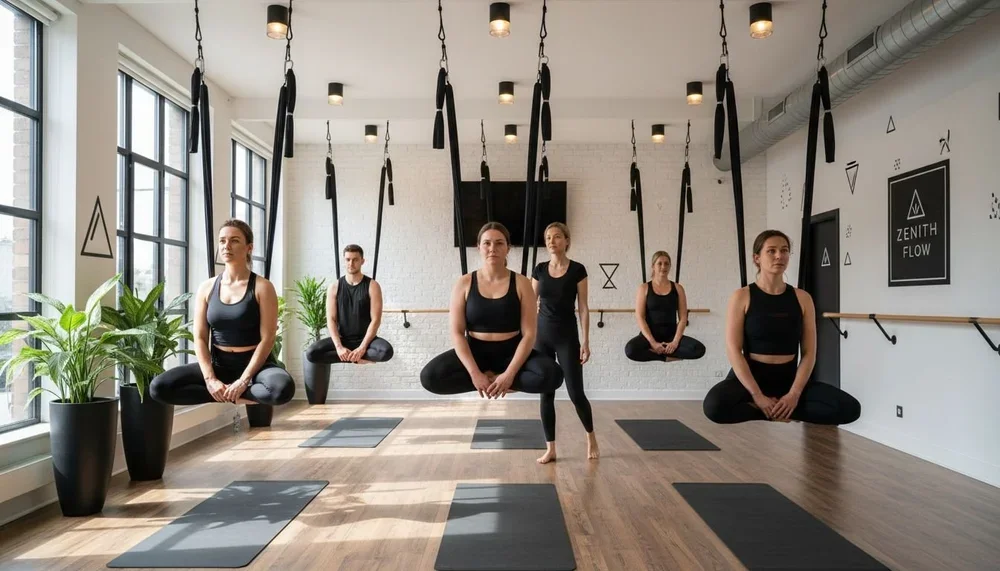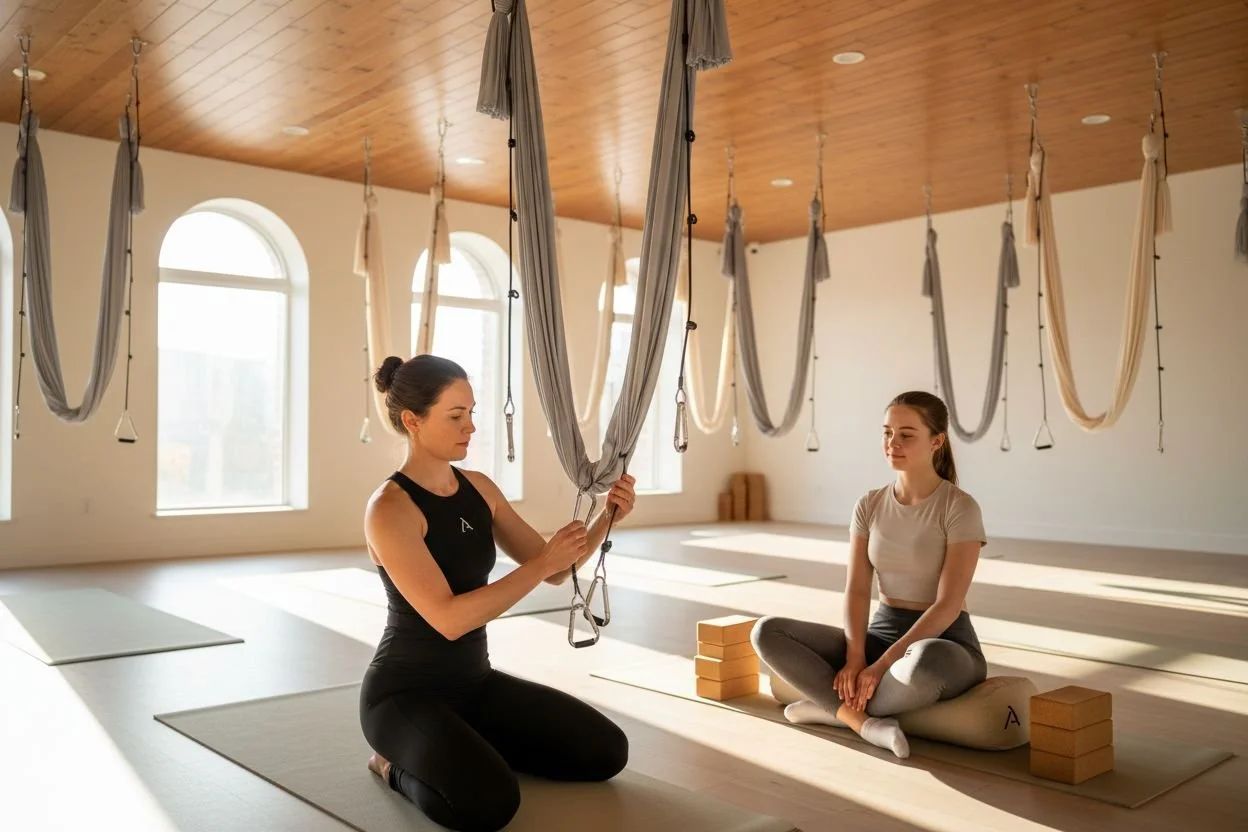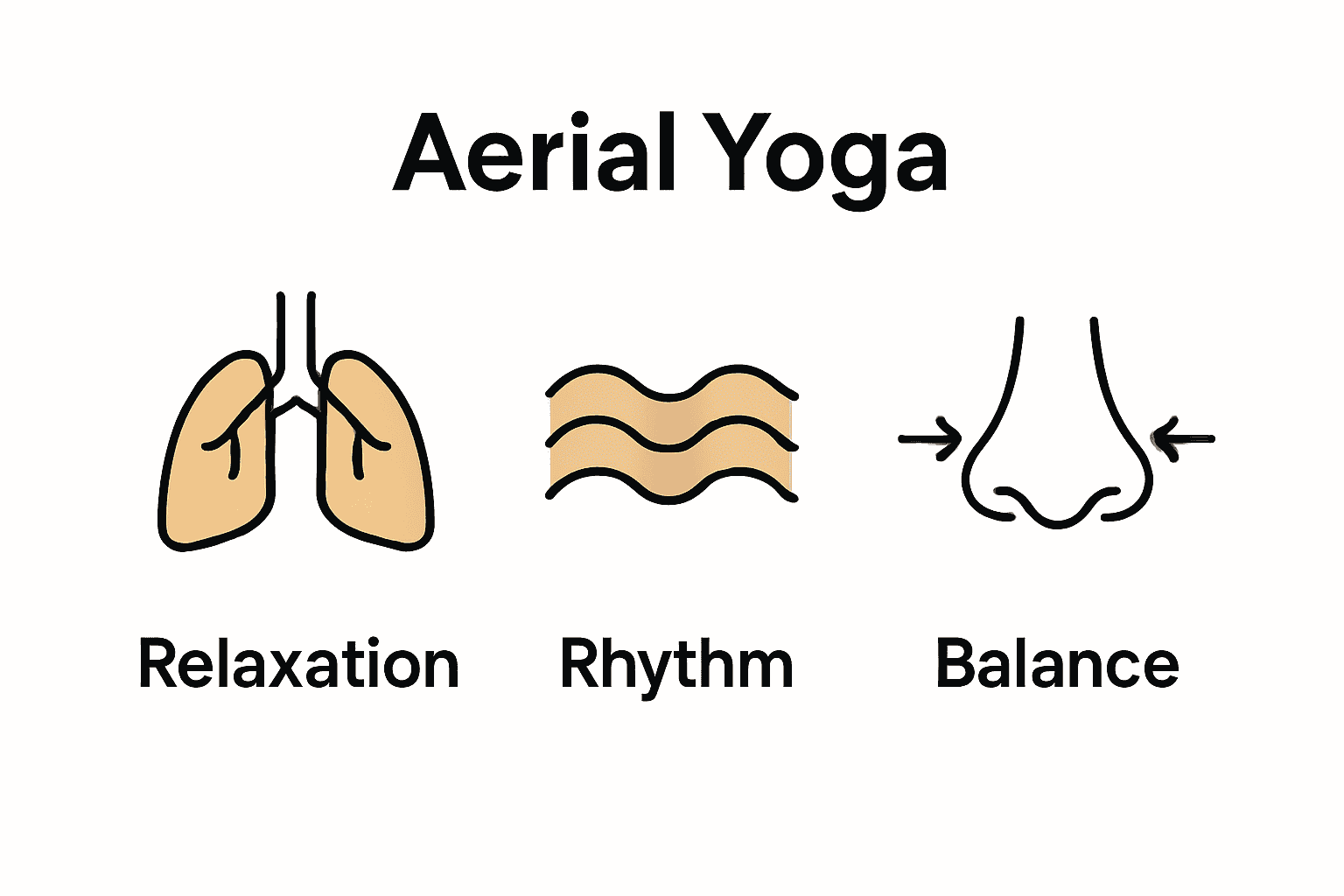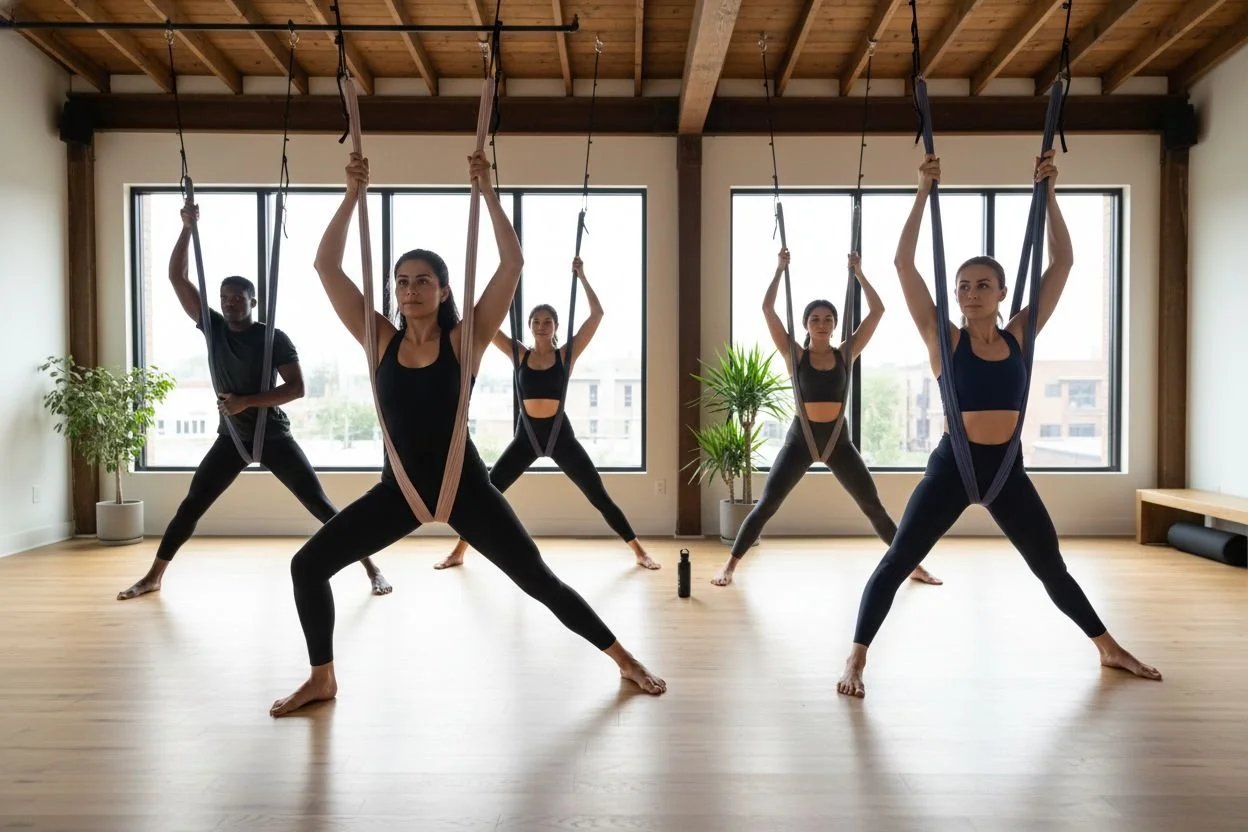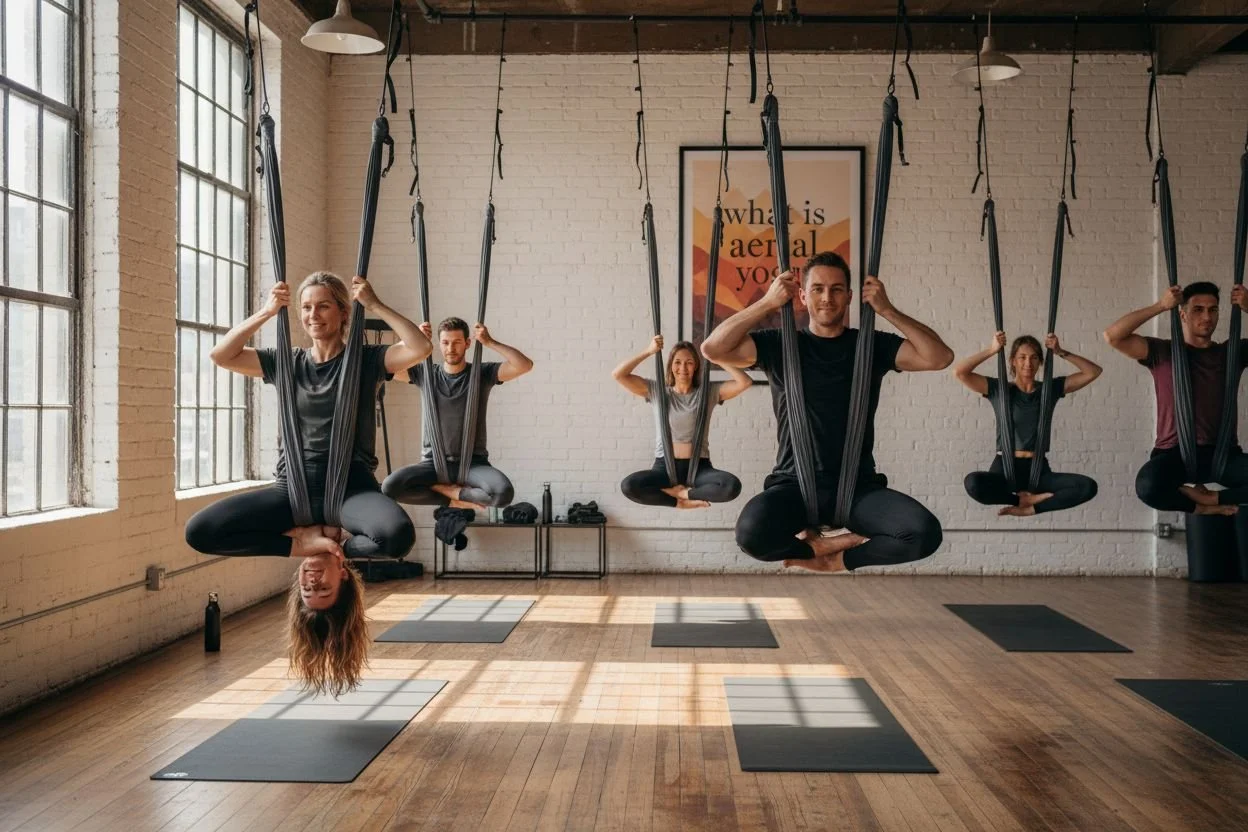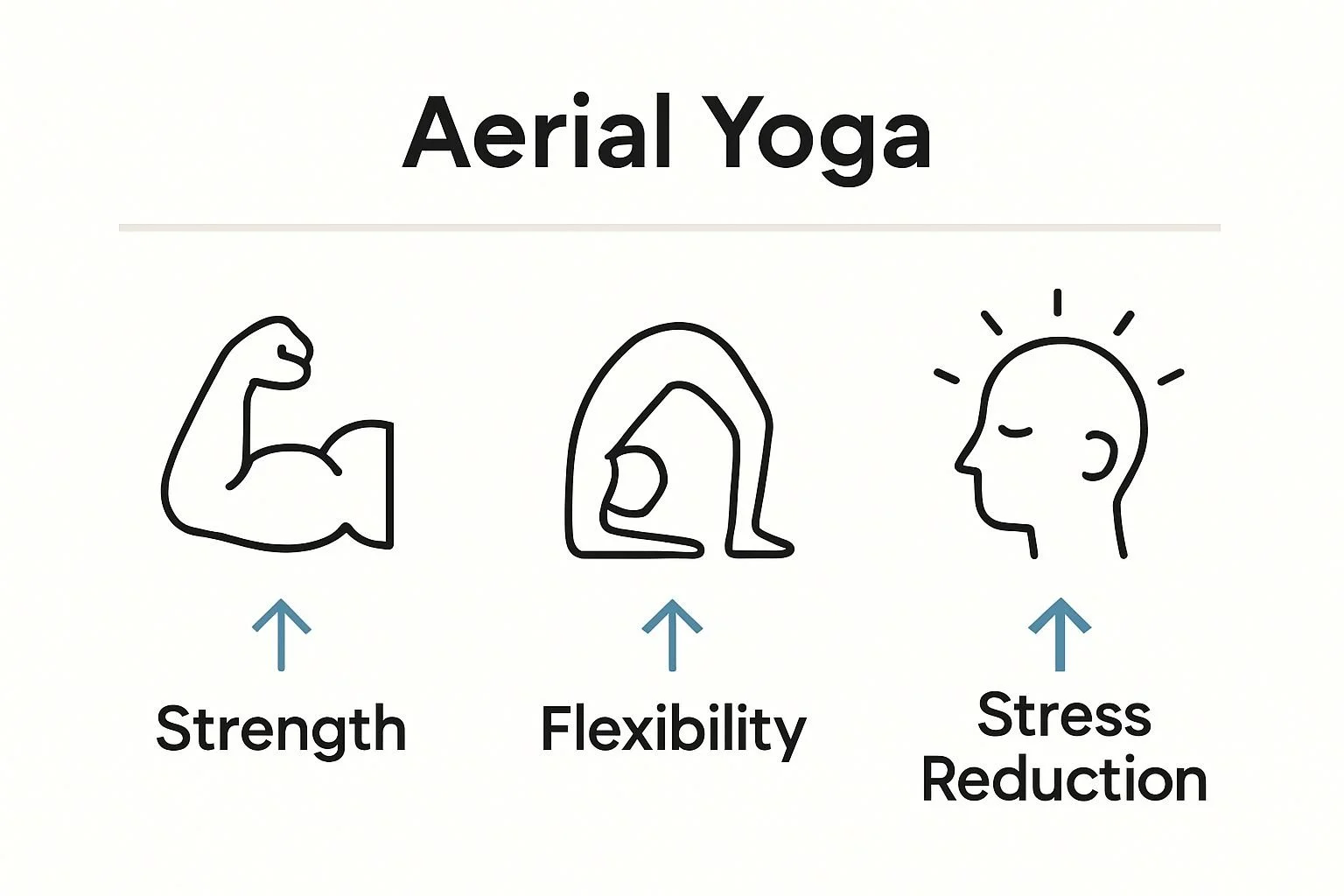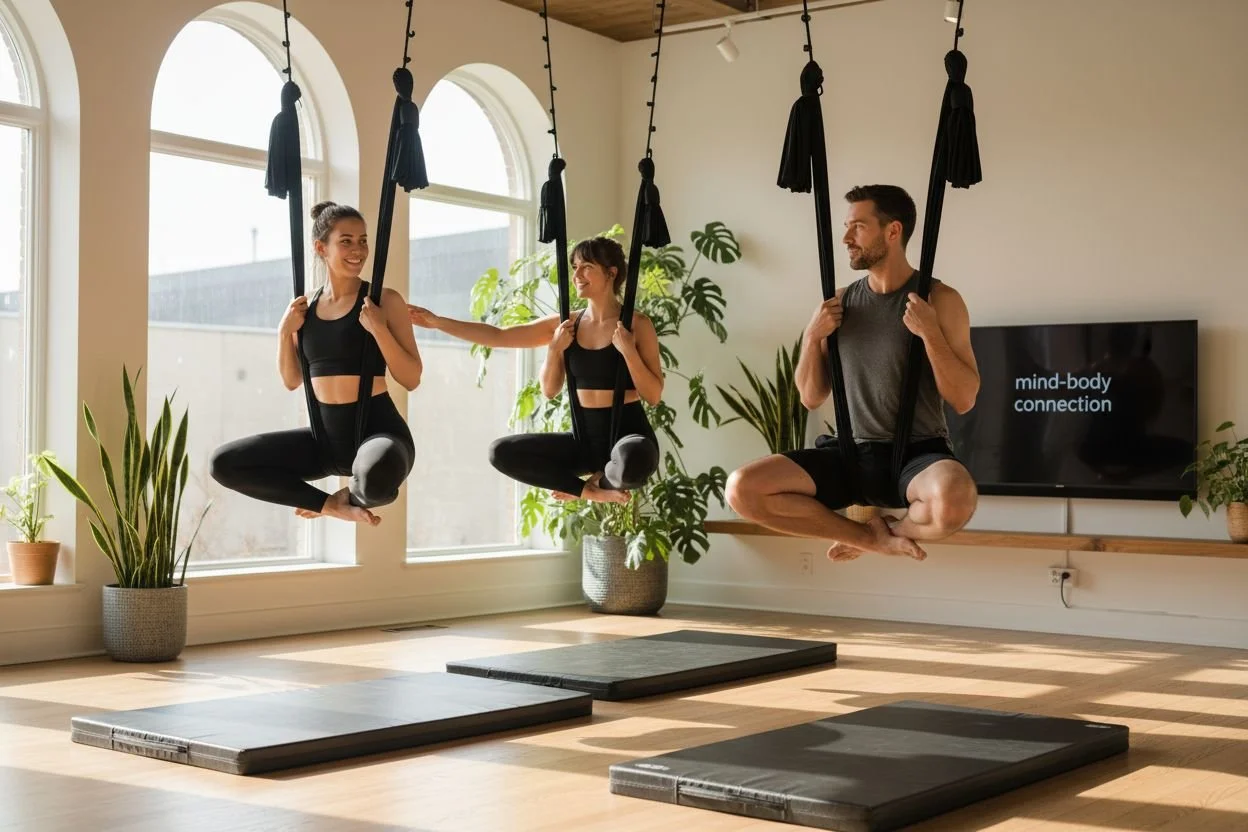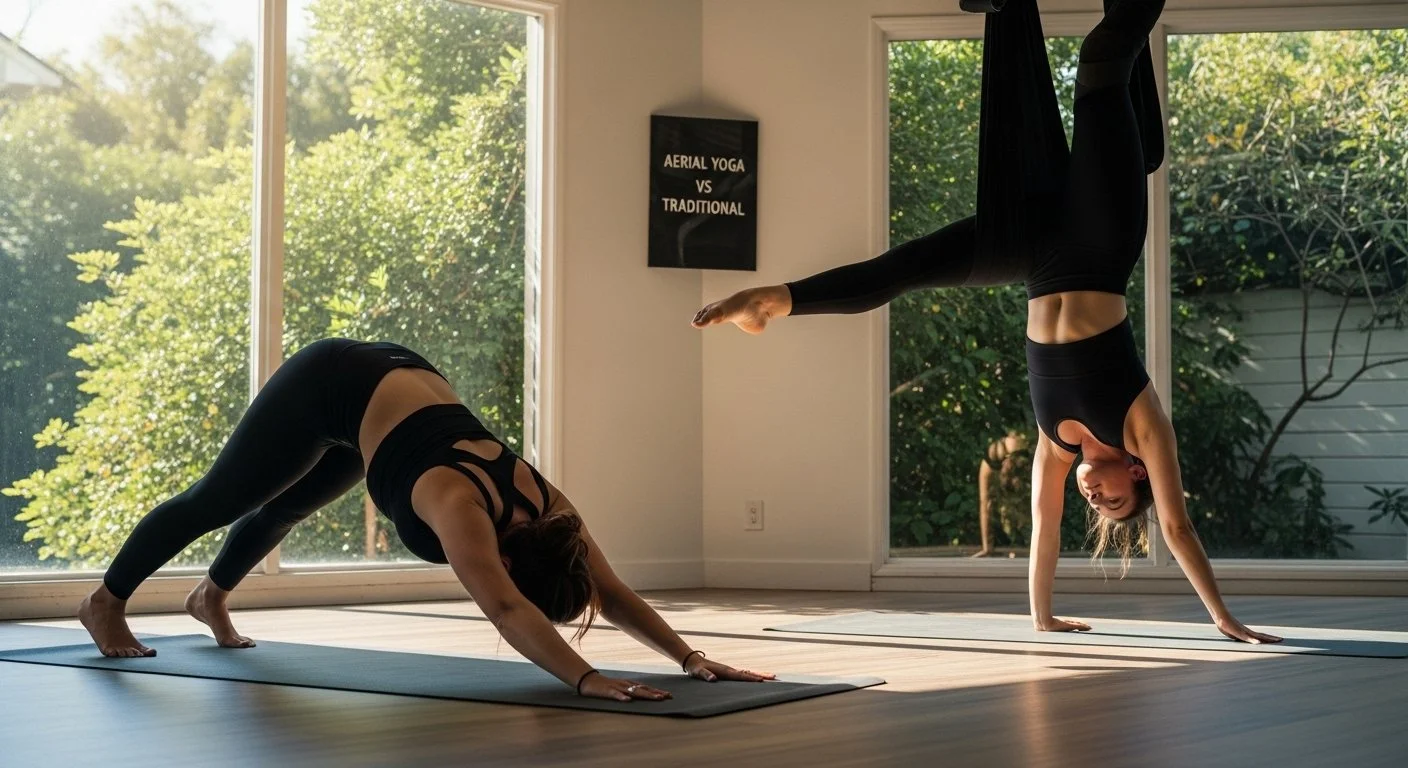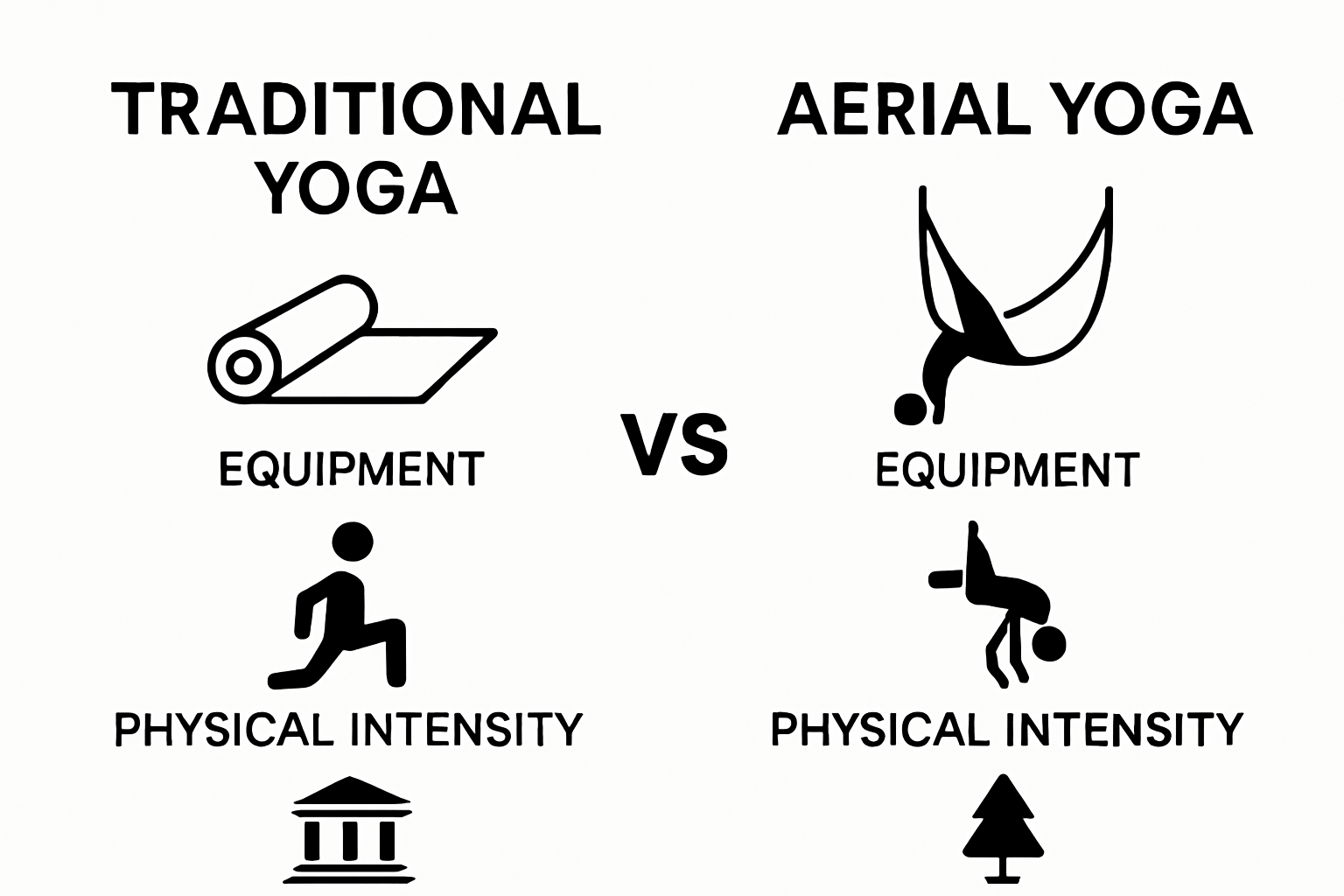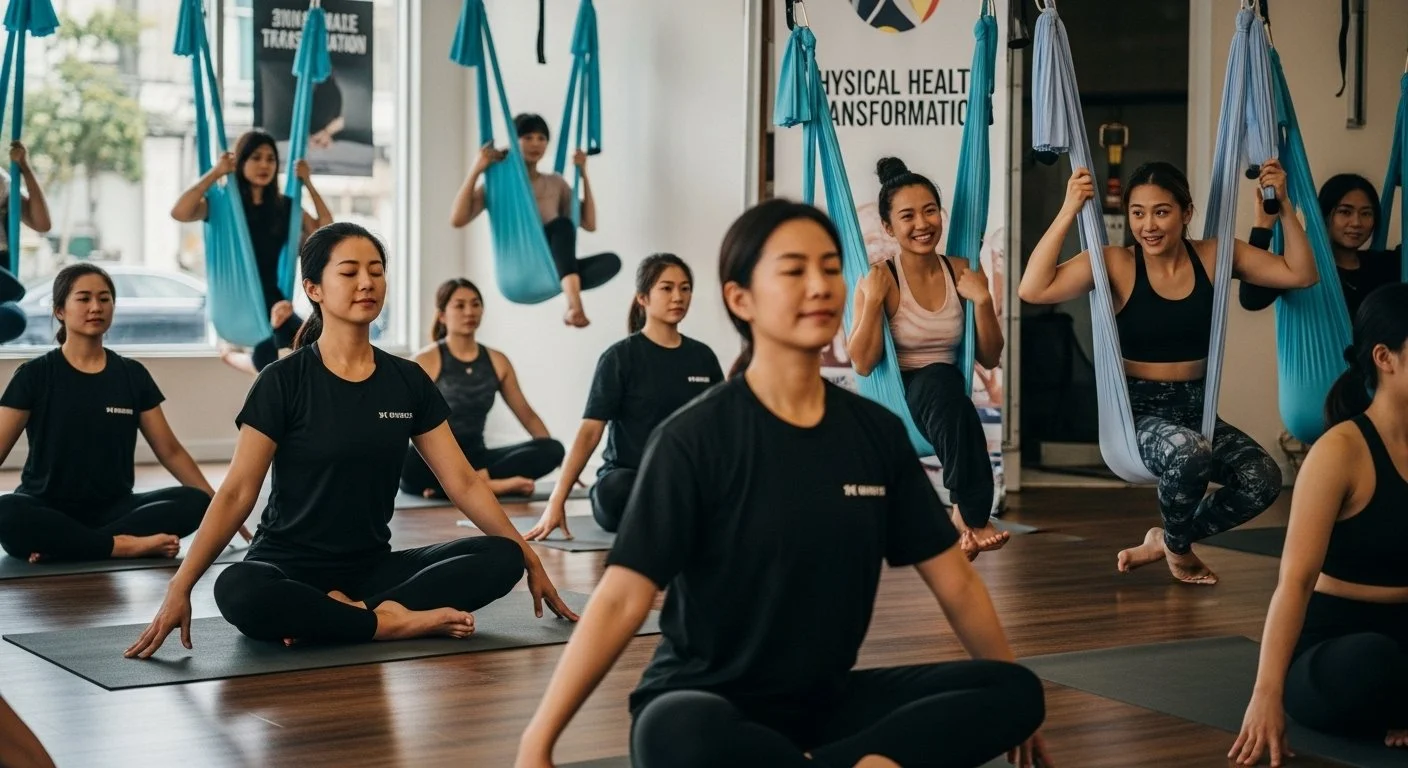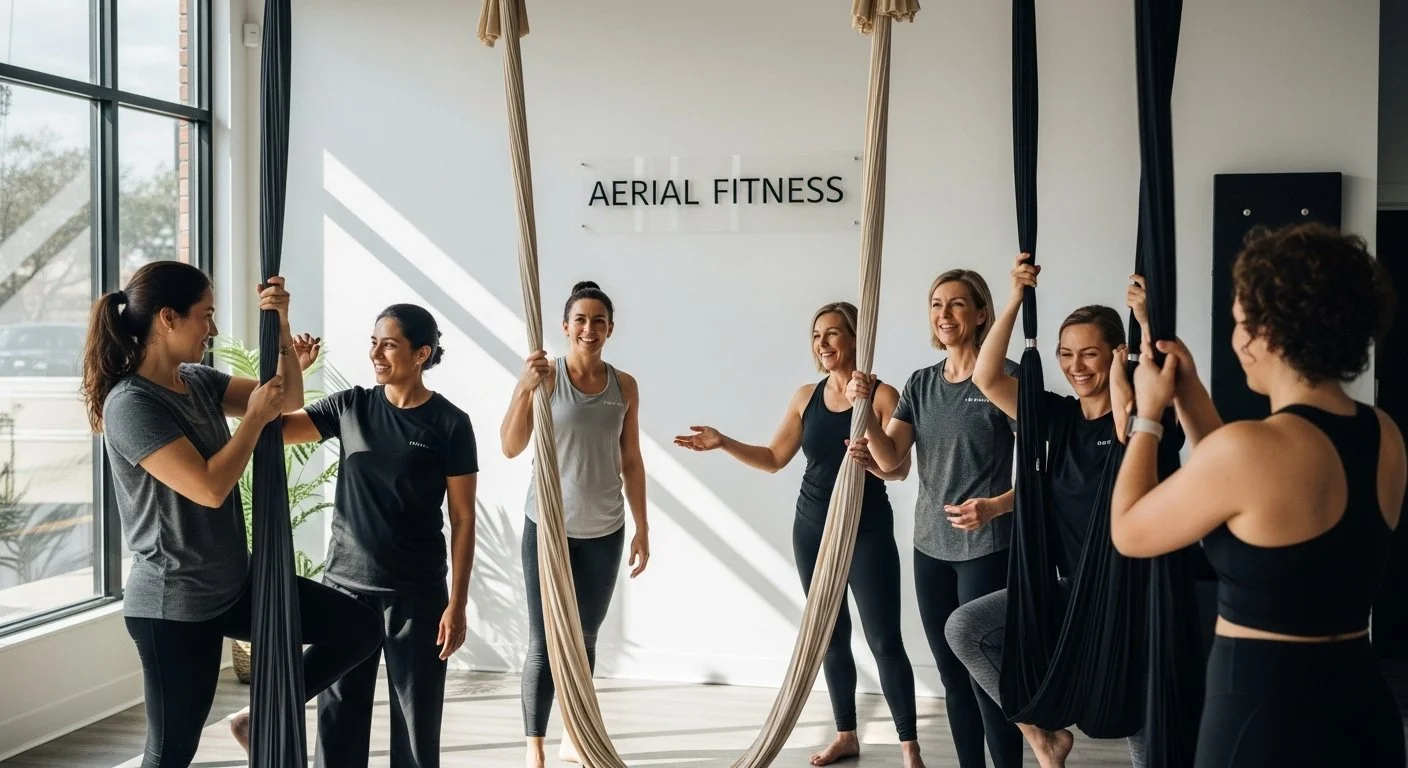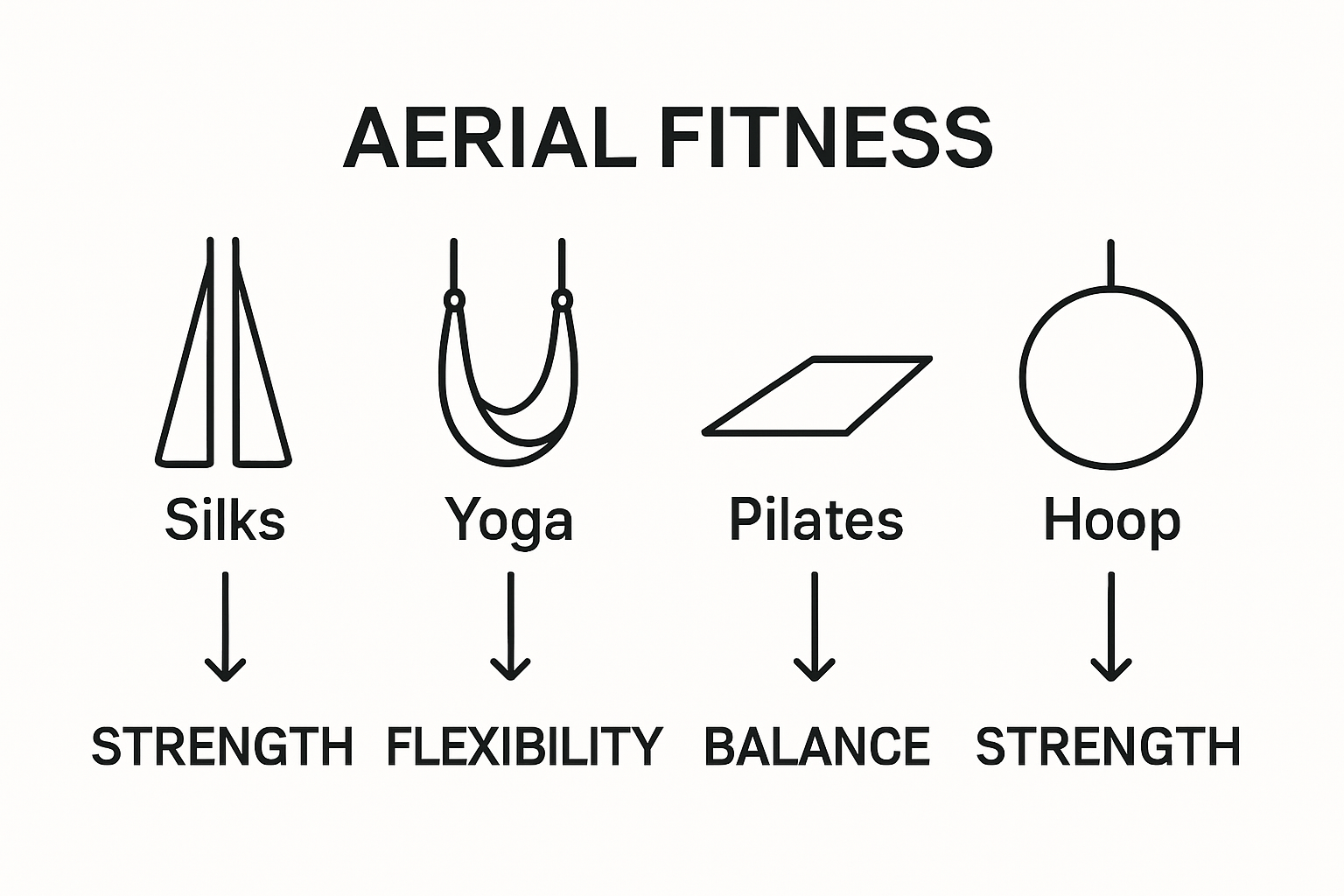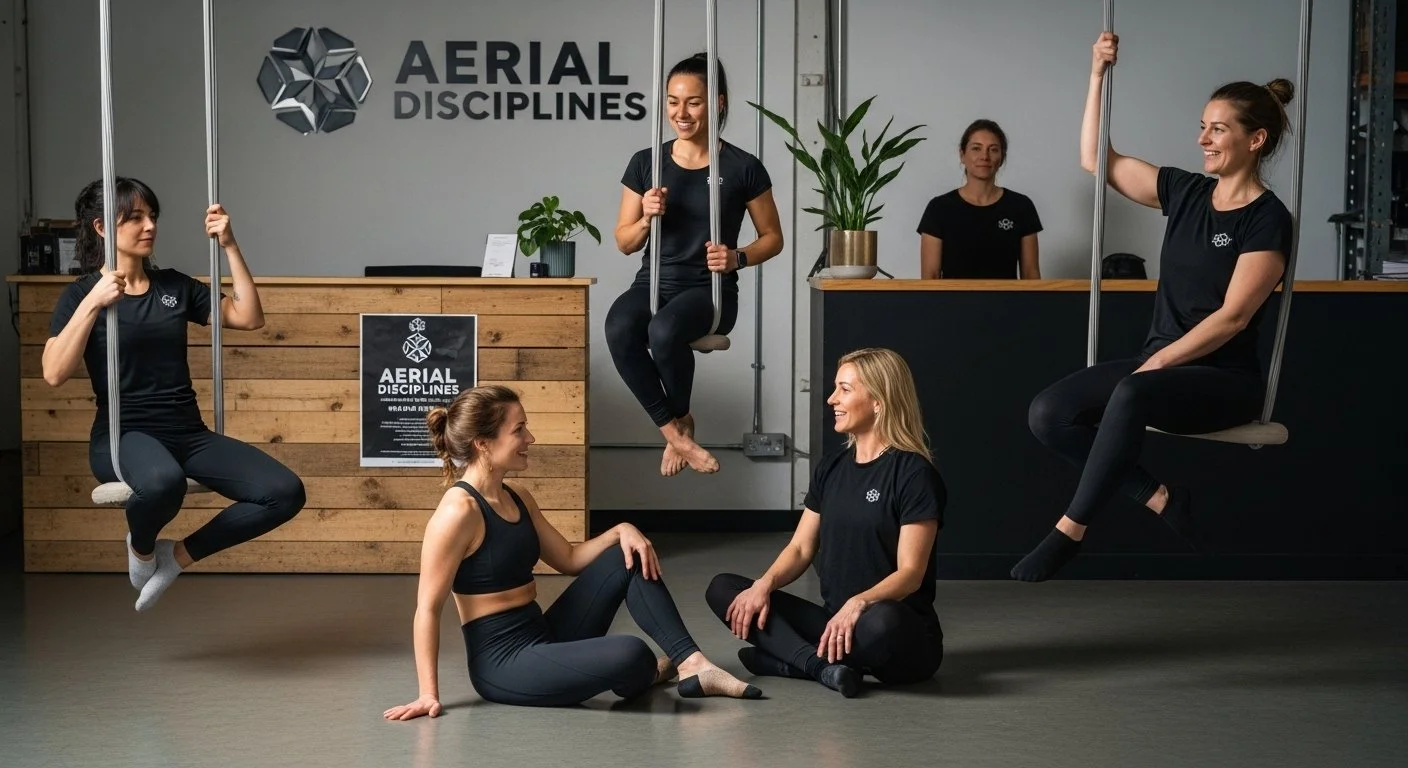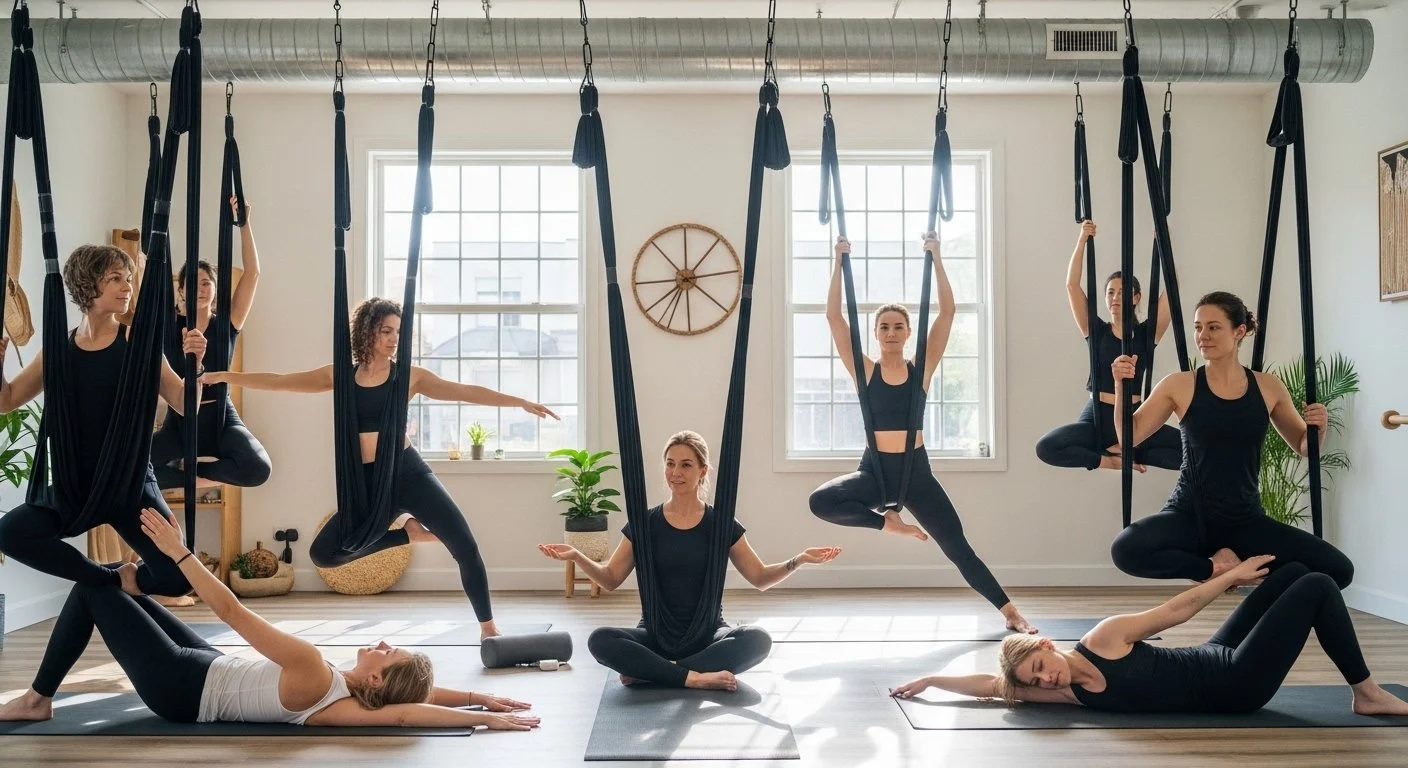Aerial Yoga Terminology: Complete Guide and Definitions
Heather Rice
Aerial yoga has quickly transformed the world of fitness, with participation rising over 30 percent in recent years. This unique practice uses a silk hammock to support moves that build strength and flexibility in ways traditional yoga often cannot. Whether you are new or looking to deepen your knowledge, learning the right terms and concepts will help you feel confident and prepared for any aerial yoga class.
Table of Contents
Key Takeaways
| Point | Details |
|---|---|
| Dynamic Practice | Aerial yoga combines traditional yoga, Pilates, and dance, utilizing a hammock for support to enhance flexibility, strength, and balance. |
| Specialized Equipment | Practitioners require a secure fabric hammock and may use additional gear like grip gloves and cushioned mats to enhance safety and effectiveness. |
| Unique Terminology | Understanding key aerial yoga terms such as inversions, suspension, and flow sequences is essential for practicing safely and effectively. |
| Safety Precautions | It is crucial to practice under certified instructors and be aware of contraindications to avoid risks during sessions. |
Defining Aerial Yoga Terminology and Concepts
Aerial yoga represents a dynamic and innovative approach to traditional yoga practice that literally elevates your workout. According to Healthline, this hybrid discipline integrates traditional yoga poses with aerial arts, utilizing a specialized fabric hammock to support and transform physical movements.
Developed in 2006 by Michelle Dortignac, aerial yoga combines elements from multiple disciplines including traditional yoga, Pilates, and dance. As Wikipedia explains, the practice involves performing various poses while suspended, with the primary goal of enhancing flexibility, strength, and balance. The unique suspension method allows practitioners to experience yoga poses from completely new perspectives.
Key characteristics of aerial yoga include:
Use of a fabric silk hammock as primary support equipment
Poses performed partially or fully suspended above the ground
Increased range of motion compared to traditional mat yoga
Potential for deeper stretches and reduced joint compression
The fundamental terminology in aerial yoga revolves around understanding how the hammock functions as both a support system and a tool for challenging traditional yoga practices. Practitioners learn specialized techniques like inversion, suspension, and swing movements that distinguish aerial yoga from ground-based yoga styles. What is Aerial Yoga? Understanding Its Benefits and Techniques provides additional insights into mastering these unique movement patterns.
Essential Equipment and Pose Definitions
Aerial yoga requires specialized equipment that transforms traditional yoga practice into a suspended, gravity-defying experience. Healthline highlights that the primary piece of equipment is a fabric hammock, which must be securely anchored to support practitioners during various poses and movements.
The hammock itself is typically constructed from a strong, elastic fabric designed to safely support body weight while allowing flexibility and movement. According to Wikipedia, key poses that practitioners commonly explore include:
Cross Position: A foundational pose involving full body suspension
Star Inversion: An advanced pose emphasizing balance and core strength
One-Legged King Pigeon Pose: A challenging stretch that utilizes hammock support
Beyond the basic hammock, additional equipment can enhance the aerial yoga experience. Practitioners might use:
Grip-enhancing gloves
Specialized yoga socks
Cushioned floor mats for safety during dismounts
Resistance bands for supplemental strength training
Understanding pose terminology is crucial for aerial yoga practitioners. Each pose has specific technical definitions related to body positioning, hammock interaction, and movement flow. Understanding Aerial Yoga vs Traditional Yoga: Explained can provide deeper insights into how these unique poses differentiate aerial yoga from ground-based practices.
Key Terms Related to Techniques and Sequencing
Aerial yoga introduces a unique set of technical terms that distinguish it from traditional ground-based yoga practices. Healthline explains that one of the most fundamental techniques is the inversion, where practitioners hang upside down to achieve spinal decompression and explore gravity-defying movements.
Sequencing in aerial yoga involves carefully structured movement patterns that blend traditional yoga poses with aerial-specific techniques. According to Wikipedia, these sequences are designed to enhance overall body strength and flexibility through innovative movement combinations. Key sequencing techniques include:
Flow Sequences: Smooth transitions between suspended poses
Anchor Points: Specific hammock attachment locations for stability
Release Movements: Controlled techniques for transitioning between suspended and grounded positions
Advanced practitioners develop a nuanced understanding of technical terminology that goes beyond basic pose names. These terms often describe the intricate interactions between the body, hammock, and gravitational forces. Some essential technical terms include:
Silk Grip: The method of holding and manipulating the hammock fabric
Zero Compression Inversion: A technique that allows complete spinal decompression
Suspension Angle: The precise body positioning relative to the ground
What is Aerial Yoga? Understanding Its Benefits and Techniques offers additional insights into mastering these complex movement techniques and understanding the subtle language of aerial yoga practice.
Safety Terms and Common Precautions
Safety is paramount in aerial yoga, with specific terminology and protocols designed to protect practitioners during their suspended practice. Healthline emphasizes the critical importance of using certified instructors and ensuring professional equipment setup as foundational safety measures.
Contraindication Terms are essential for understanding individual risk factors. Practitioners should be aware of specific conditions that might limit or prevent participation in aerial yoga, including:
Medical Clearance: Professional health approval for participation
Absolute Contraindications: Conditions that completely prohibit aerial yoga
Relative Contraindications: Conditions requiring modified practice
Specific safety precautions involve understanding risk management terminology. Key safety concepts include:
Spotter Technique: Having an instructor nearby to assist during challenging poses
Safe Landing Protocol: Controlled methods for exiting hammock positions
Equipment Integrity Check: Pre-class inspection of hammocks and suspension points
Potential practitioners should be aware of specific health limitations. Individuals with the following conditions should consult healthcare providers before participating:
Pregnancy
Glaucoma
High blood pressure
Recent surgical procedures
Severe inner ear disorders
Understanding Aerial Yoga vs Traditional Yoga: Explained provides additional context for understanding the unique safety considerations of aerial yoga practice.
Frequently Misunderstood Aerial Yoga Terms
Aerial yoga is often shrouded in misconceptions that can intimidate potential practitioners. Healthline clarifies that one of the most prevalent myths is that aerial yoga is exclusively for advanced fitness enthusiasts, when in reality, many classes are specifically designed to welcome beginners.
Accessibility Terminology plays a crucial role in dispelling common misunderstandings. Key terms that are frequently confused include:
Inversion: Often mistaken as a complex move, but can be modified for all skill levels
Suspension: Incorrectly perceived as requiring extraordinary strength
Silk Grip: Thought to demand extensive upper body strength, but actually adaptable for various fitness levels
Practitioners often misinterpret technical terms, leading to unnecessary anxiety about participation. Common misconceptions involve:
Believing zero compression inversions require extreme flexibility
Assuming aerial yoga is only for young, athletic individuals
Thinking specialized equipment means complicated practice
Aerial Yoga Guide for Beginners: Step-by-Step Practice Success offers comprehensive insights for those looking to understand the true accessibility and adaptability of aerial yoga practice.
Unlock the Power of Aerial Yoga with Expert Guidance
Struggling to understand aerial yoga terms like inversion, suspension, or silk grip can make starting your practice feel overwhelming. This guide demystifies the terminology and safety concepts, but taking the next step means experiencing these moves firsthand in a supportive environment. At Amrita Yoga & Wellness, we specialize in making aerial yoga accessible to everyone regardless of your fitness level or experience. Our certified instructors focus on clear instruction and personal attention so you can confidently explore poses like the star inversion or cross position safely and effectively.
Ready to elevate your yoga journey and master these unique aerial techniques? Visit our website to find beginner-friendly aerial yoga classes and workshops designed to build strength and flexibility while deepening your understanding of pose sequencing and safety precautions. Discover how our welcoming community and expert-led sessions at Amrita Yoga & Wellness can transform your practice today. Don’t wait to feel the liberating benefits of aerial yoga—sign up now and start your ascent toward greater balance and well-being.
Frequently Asked Questions
What is aerial yoga?
Aerial yoga is a hybrid practice that combines traditional yoga poses with aerial arts, using a specialized fabric hammock for support. This unique approach enhances flexibility, strength, and balance while allowing practitioners to experience poses from new perspectives.
What equipment is needed for aerial yoga?
The primary equipment required for aerial yoga is a fabric hammock, which must be securely anchored. Additional items such as grip-enhancing gloves, specialized yoga socks, cushioned floor mats, and resistance bands can also enhance the practice.
What are some key poses in aerial yoga?
Key poses commonly explored in aerial yoga include the Cross Position, which involves full body suspension, the Star Inversion that emphasizes balance and core strength, and the One-Legged King Pigeon Pose, a challenging stretch utilizing hammock support.
What safety precautions should I take when practicing aerial yoga?
To ensure safety during aerial yoga, it's essential to work with certified instructors and use professional equipment. Practitioners should also be aware of medical contraindications, implement safe landing protocols, and conduct pre-class equipment integrity checks.

